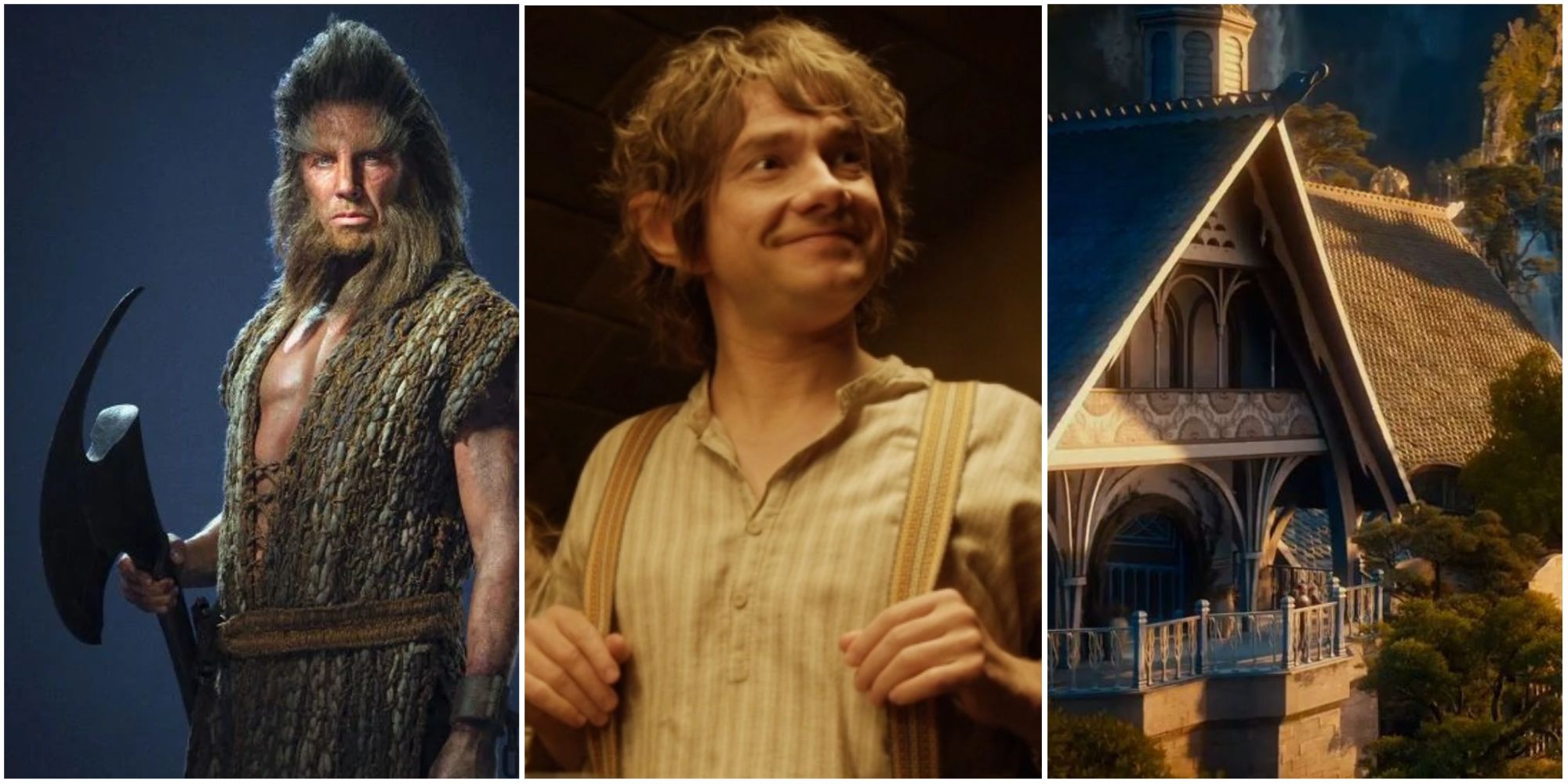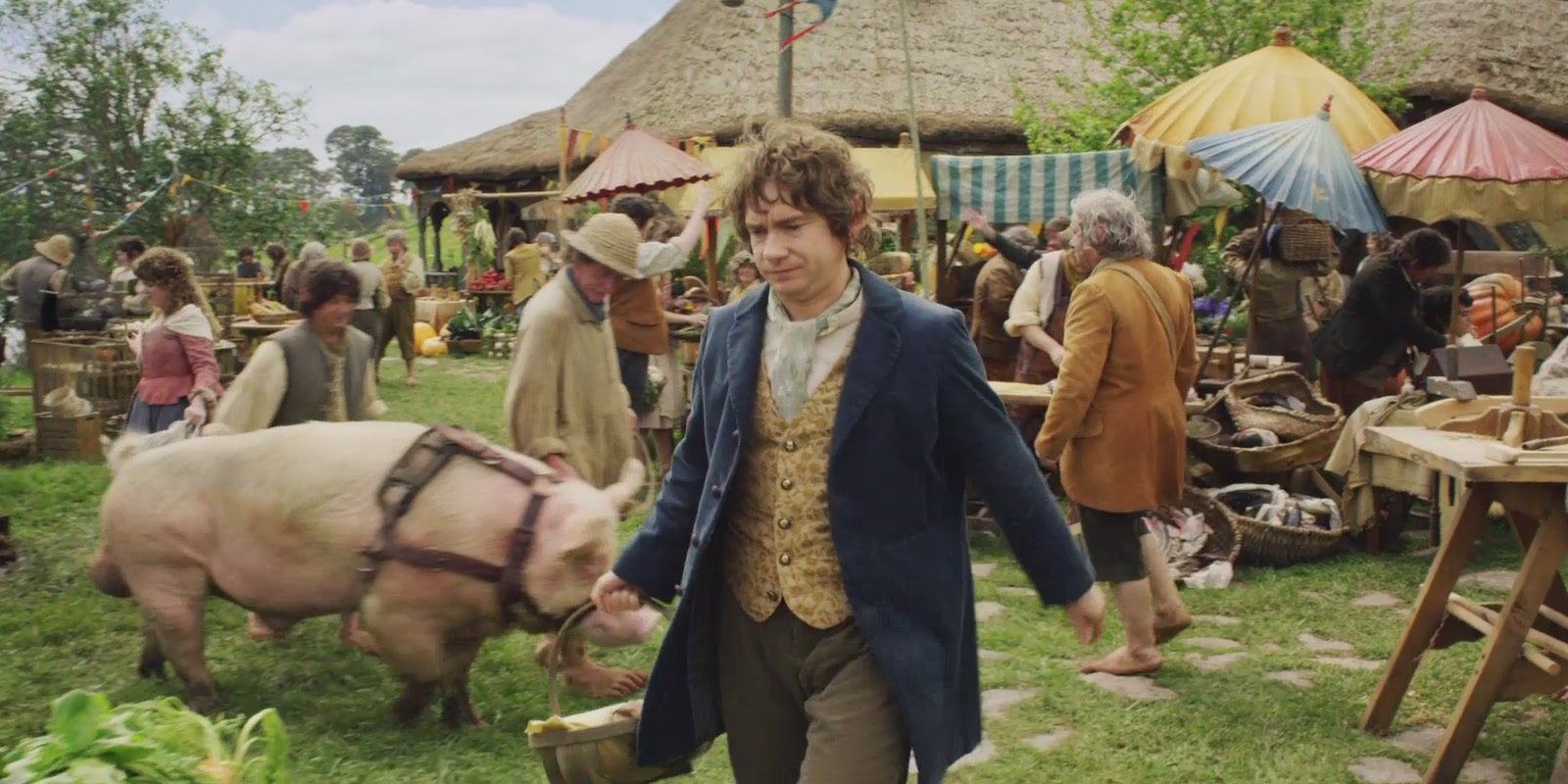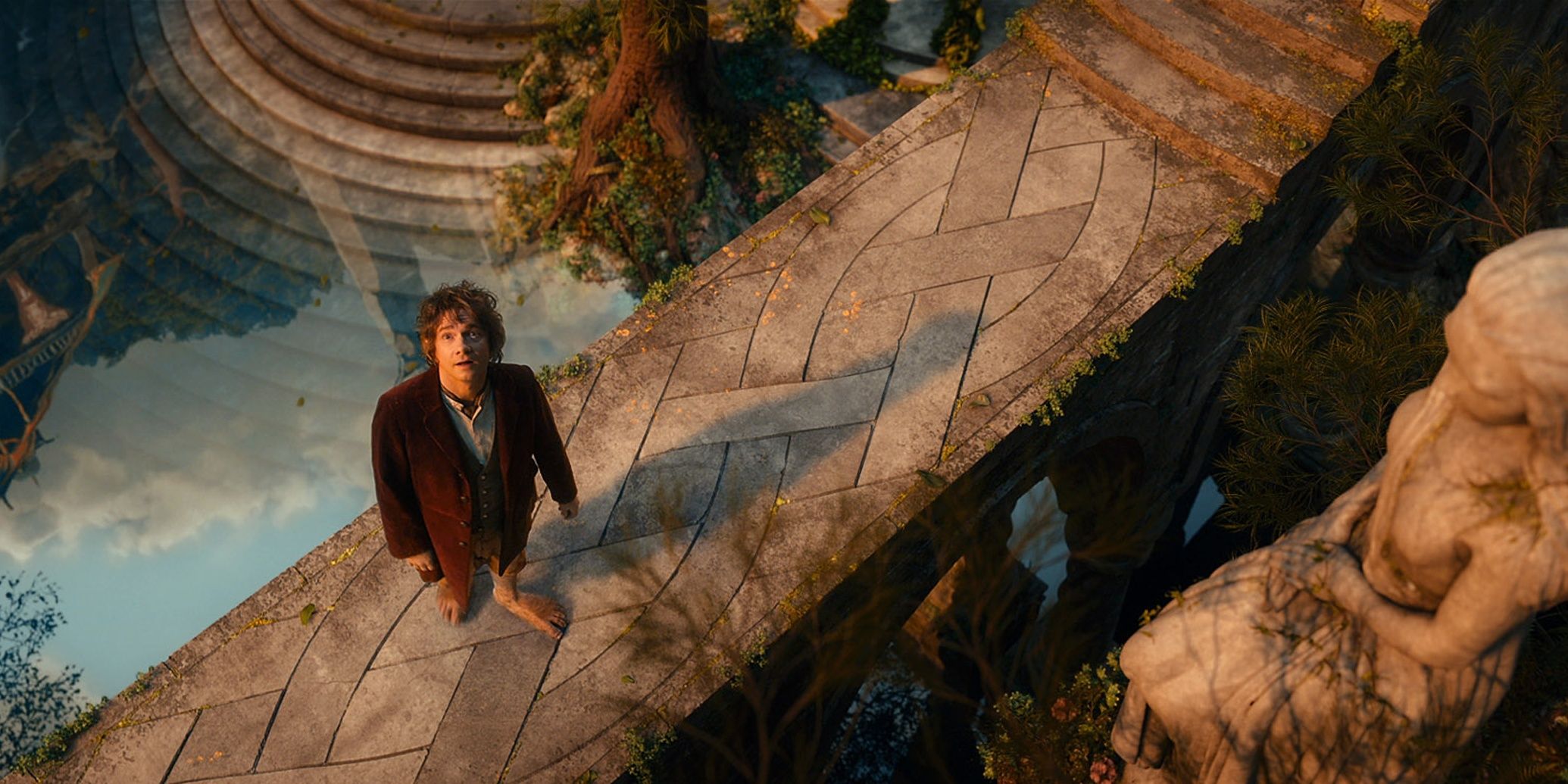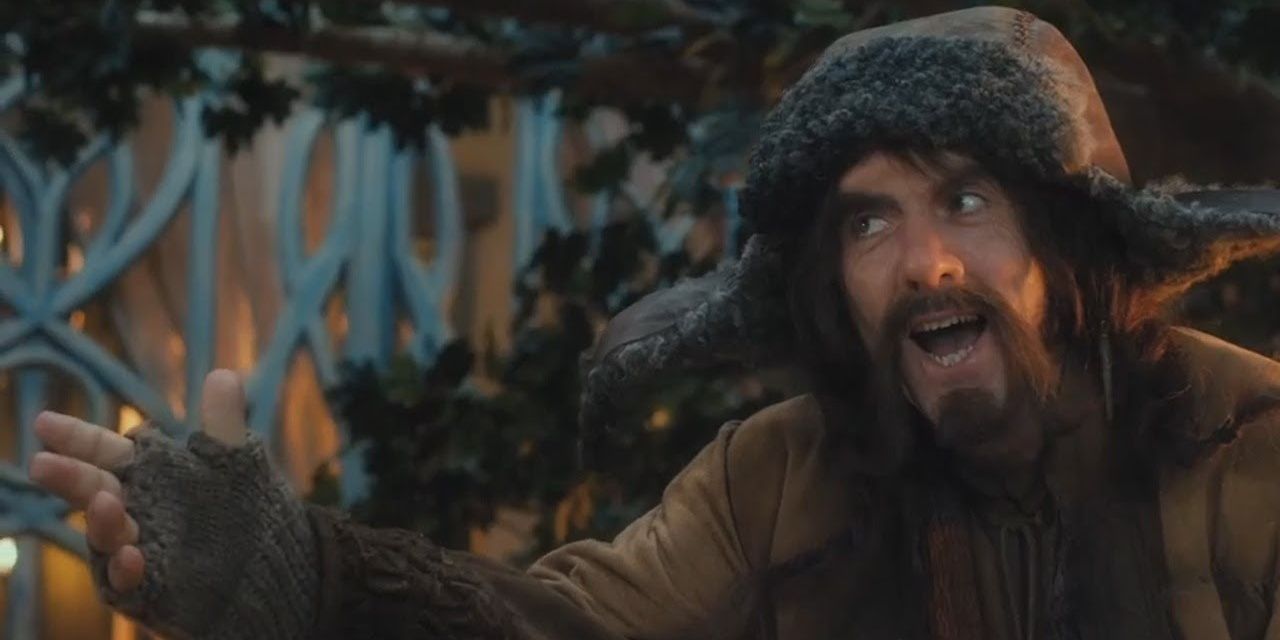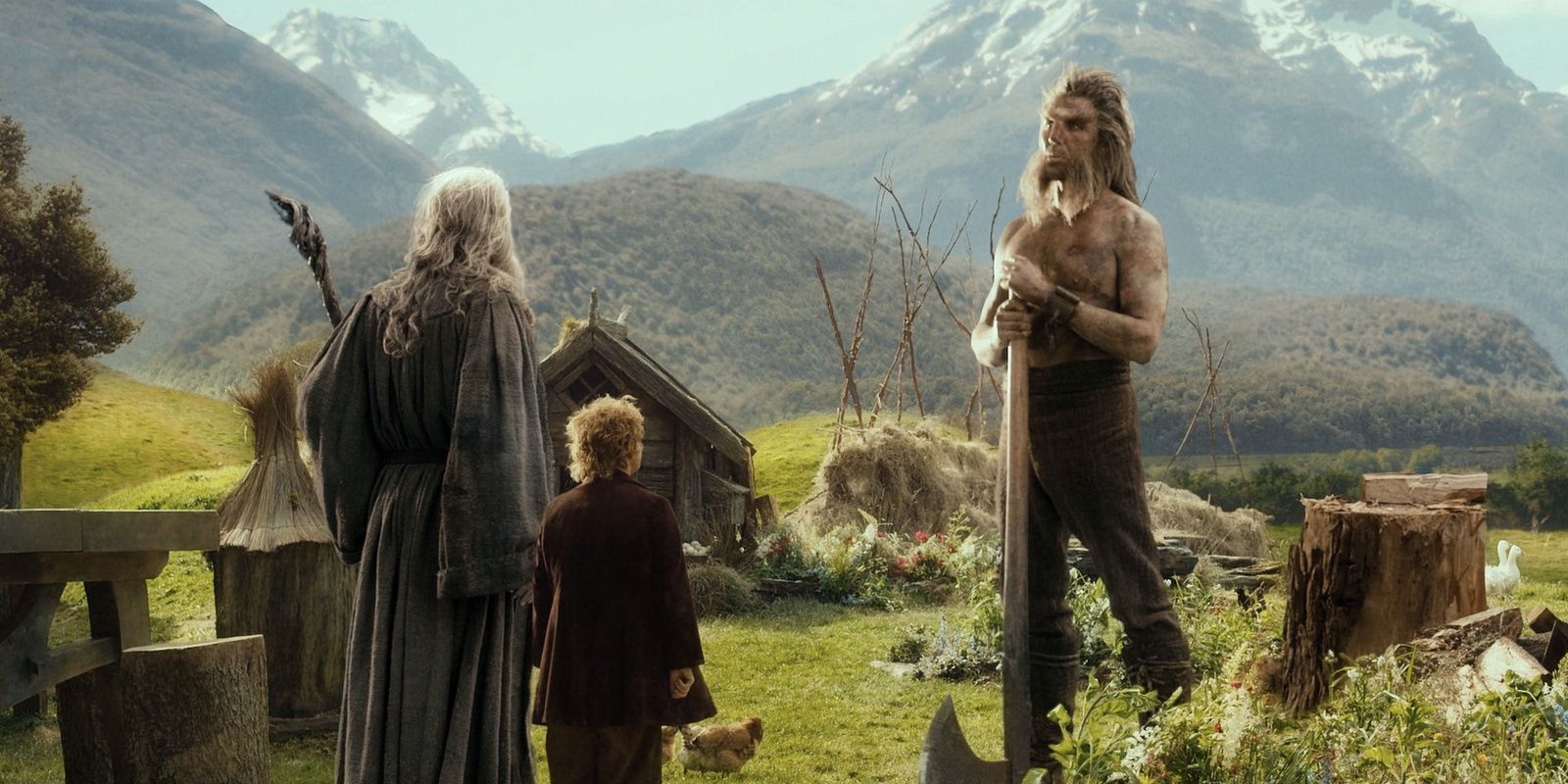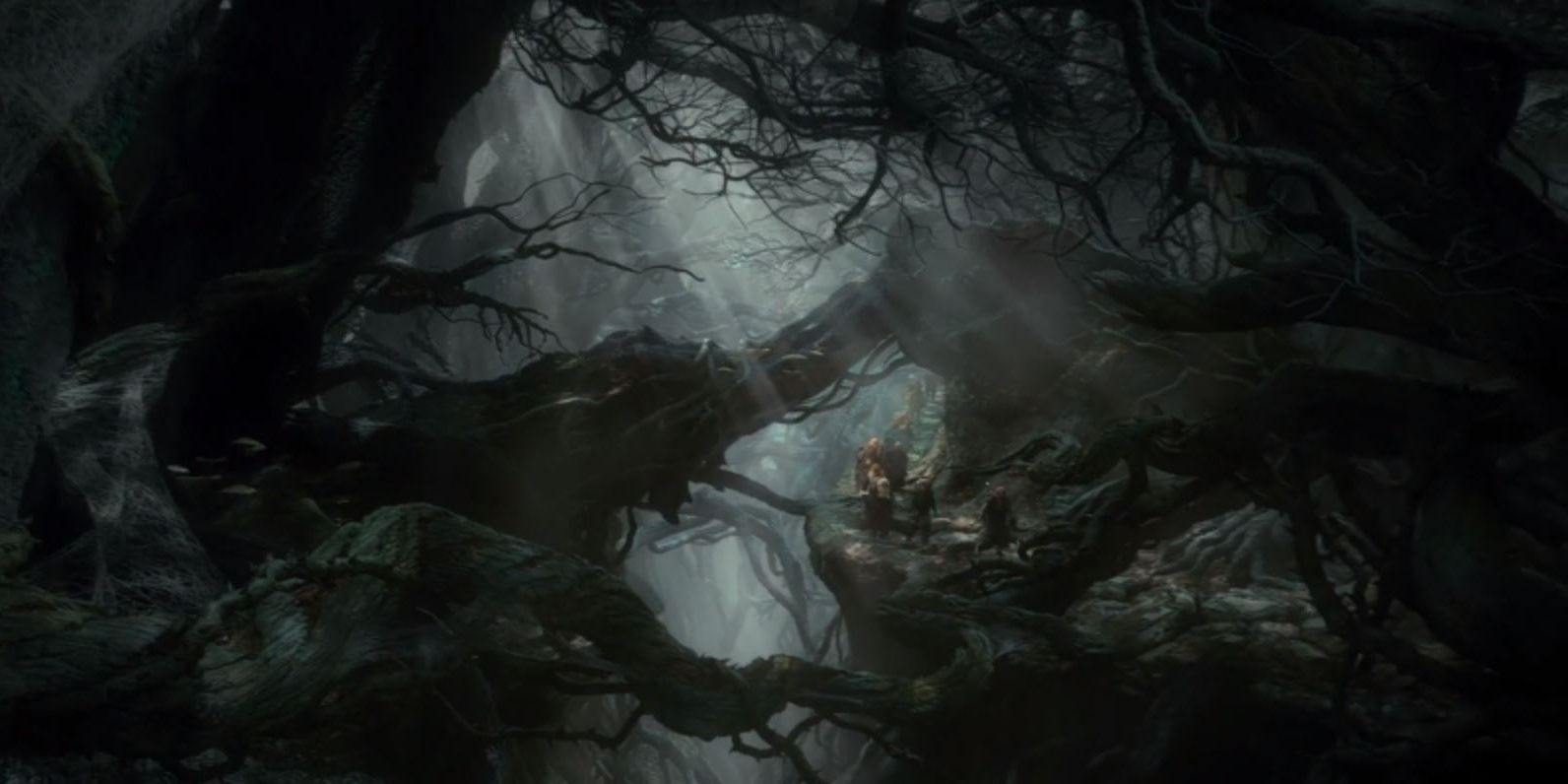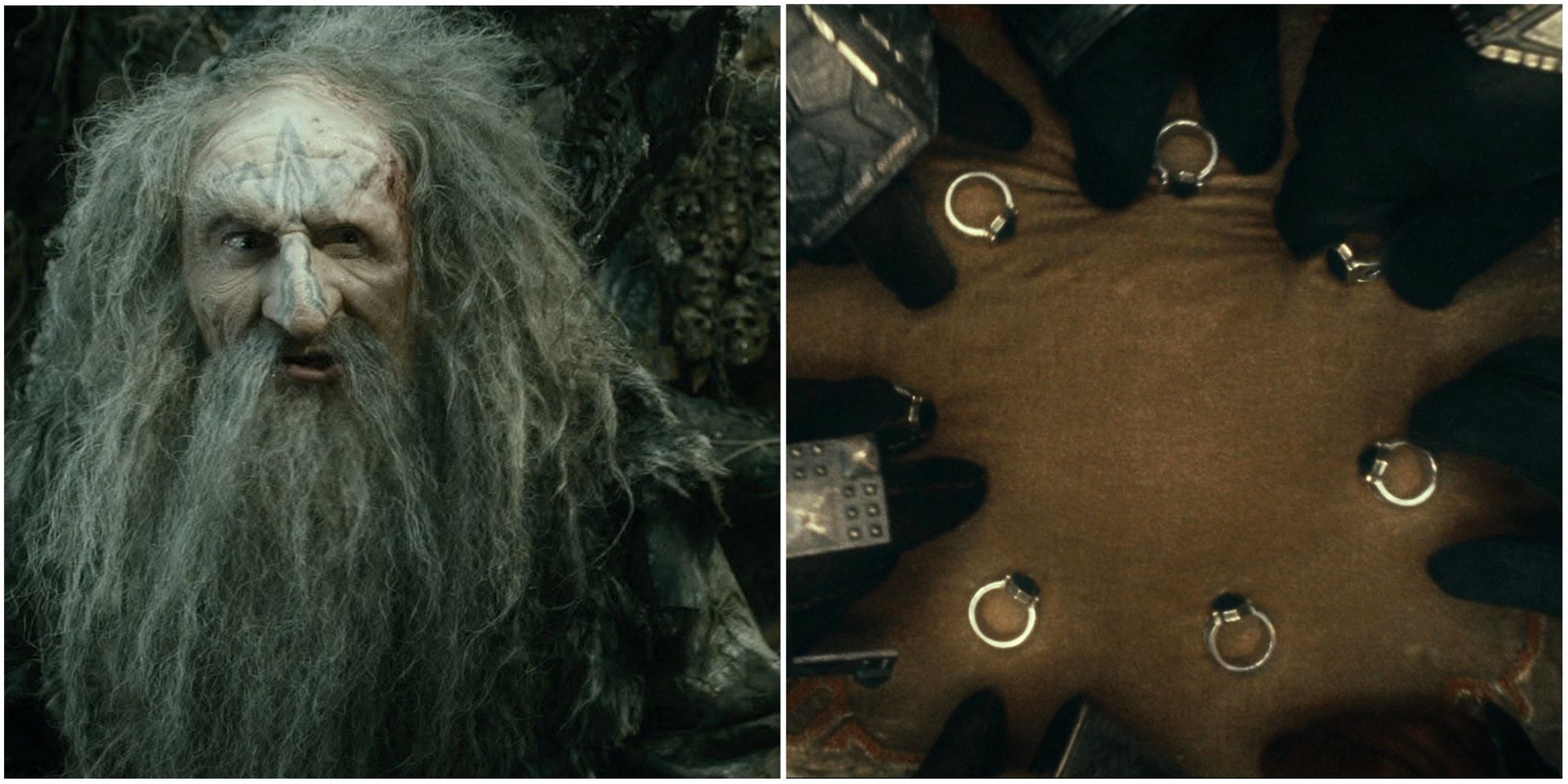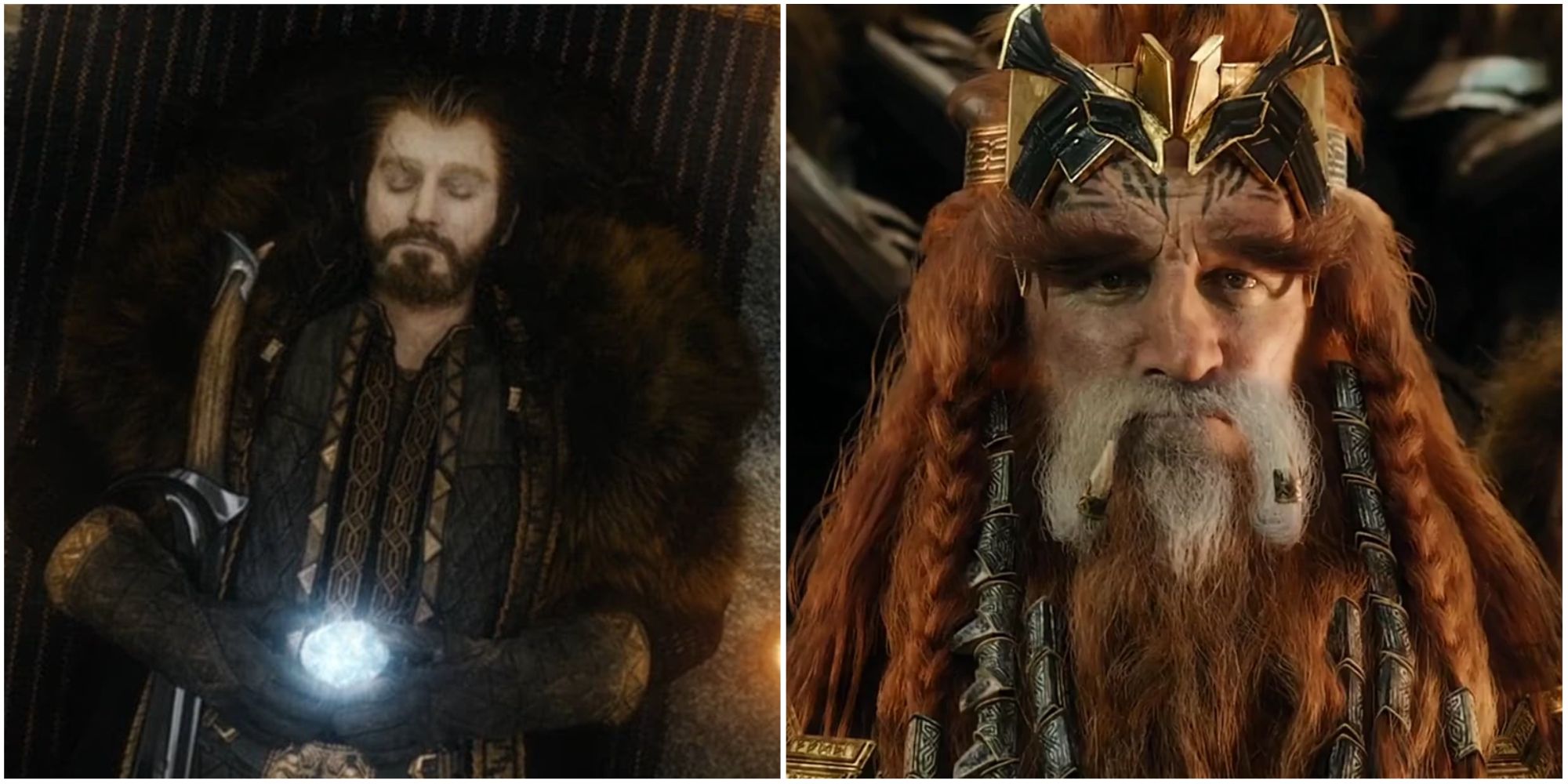The Hobbit films are already long movies, averaging about three hours for each one. However, they also come with Extended Editions, which boast up to a half hour of new footage per film. This may seem excessive. Like The Lord of the Rings, though, these end up as the better versions.
While the theatrical versions are more accessible to a wider audience due to their shorter length, the extended cuts are the preferred choice among fans. They have a host of scenes bringing the movies closer to J.R.R. Tolkien: character interactions which echo the books in the best way. On top of that, these sequences are charming in their own right. Considering the passion on display, viewers ought to experience the journey of The Hobbit in all its glory.
7 Bilbo In Hobbiton
Despite the title, the tale doesn't spend much time with the Hobbits. Most of the setup unfolds in Bilbo's house. Viewers don't get a closer look at the other Shire residents until the third film's ending. Granted, The Lord of the Rings had an entire sequence "concerning Hobbits" and their lifestyles, so one can argue that audiences don't need anything more.
However, a new narrative should establish their culture in some way, especially since it's instrumental to Bilbo's character. That's why the Extended Edition contains a scene where Baggins visits the Hobbiton market. He looks utterly in his element among the peaceful, humble atmosphere. It's easy to see why he misses that sense of home, as it informs his character and values. What better sequence to bookend the story?
6 Bilbo In Rivendell
The Shire isn't the only place Bilbo remembers fondly. During the party's stay at Rivendell, Bilbo explores the Elven sanctuary with wonder and appreciation. He takes in the immaculate architecture, natural beauty, and generally homely atmosphere. This scene is not only charming in itself, but it carries more meaning for his character going forward.
Rivendell is where Bilbo retires in The Lord of the Rings. Viewers can definitely see why, as it's the first time outside the Shire where he looks completely at peace. The filmmakers even set this up in a cute conversation with the place's host, Elrond, who says that the Hobbit is welcome to stay. Who wouldn't take him up on that offer?
5 More Songs
Musical asides permeate Tolkien's writing. Characters often recount great deeds or set the mood through song. This strengthens the sense of legend and folklore that Middle-earth is meant to emulate. The normal version of An Unexpected Journey has a couple of tunes- "That's What Bilbo Baggins Hates" and "Misty Mountains Cold"- but it pales next to the longer rendition.
The extended movie has additional songs like "Down in Goblin Town" and "Man in the Moon." On top of being oddly catchy and amusing numbers, they come directly from the source. The latter is actually an unused bit from The Fellowship of the Ring. That book sees Frodo sing it in Bree, but the adaptation leaves it out to maintain the foreboding mood. Luckily, Bofur can now use it to lift said mood. Those disgruntled at its absence will be pleased to hear it restored in some form. Fans' only complaint might be that neither of the other two films continue this trend.
4 Beorn's Introduction
Though one of the more intriguing characters, Beorn never gets a proper introduction in the theatrical film. The skin-changer chases the party into his house as a bear before morphing into a man and serving them breakfast. Sure, this keeps the plot moving, but it doesn't lend much credibility to Gandalf's trepidation around the guy.
The bear-man distinguishes himself much better in the Extended Edition. Here, he chops wood as Gandalf cautiously tries to ask for his help. Lines from the book make up their tense exchange, which brilliantly bounces between comedy and fear. It paints Beorn as the blunt, animalistic loner that he should be.
3 Malice Of Mirkwood
The forest once known as "the Greenwood" is now corrupted beyond recognition, gaining the new name of "Mirkwood." This is why Gandalf warns the Dwarves to remain vigilant, as evil lies in wait to lead the travelers astray. The regular rendition certainly has a spooky atmosphere, but there's not much misleading about it aside from the labyrinthine path.
The extended forest journey is much more evocative of the novel's hopeless holt. The Dwarves must cross a stream which brings on drowsiness, and those who stay awake must endure maddening hallucinations. On top of it all is some distorted directing right out of a horror flick. With these additions, Mirkwood truly comes alive as a place where you wouldn't want to be, one where brother turns on brother before going insane.
2 Dwarven Rings
Sprinkled throughout the Extended Editions are references to the Rings of Power. Forged in the Second Age, these went out to the lords of each race, giving them dominion over their people. Seven went to the Dwarves, but these aren't all accounted for in The Hobbit.
Gandalf makes a point about the Dwarf rings going missing during his meeting with the White Council. Viewers later see Azog cutting Thrain's ring from his finger during the battle outside Moria. This all culminates with Thrain revealed as a prisoner in Dol Guldur. From the beginning, the filmmakers frame this not only as an adaptation of The Hobbit, but as a prelude to the larger Lord of the Rings saga. These schemes strengthen that impression, as they represent Sauron's covert steps in regaining dominion over the Free Peoples of Middle-earth.
1 The King Is Dead
The resolution to the Erebor storyline feels somewhat rushed in the theatrical version. It's as if the filmmakers are overcompensating for the complaints about Return of the King having too many endings. Whatever the case, the Extended Edition provides proper closure in this area.
On top of the trumpet tribute in Dale, Thorin, Fili, and Kili get a more intimate funeral within the Lonely Mountain. This lets the other characters pay their respects and mourn in private. Afterwards, the crown formally passes to the next of kin. Dain Ironfoot becomes the King Under The Mountain, justifying his presence in the tale. Needless to say, adding some finality helps the adventure feel more complete.

